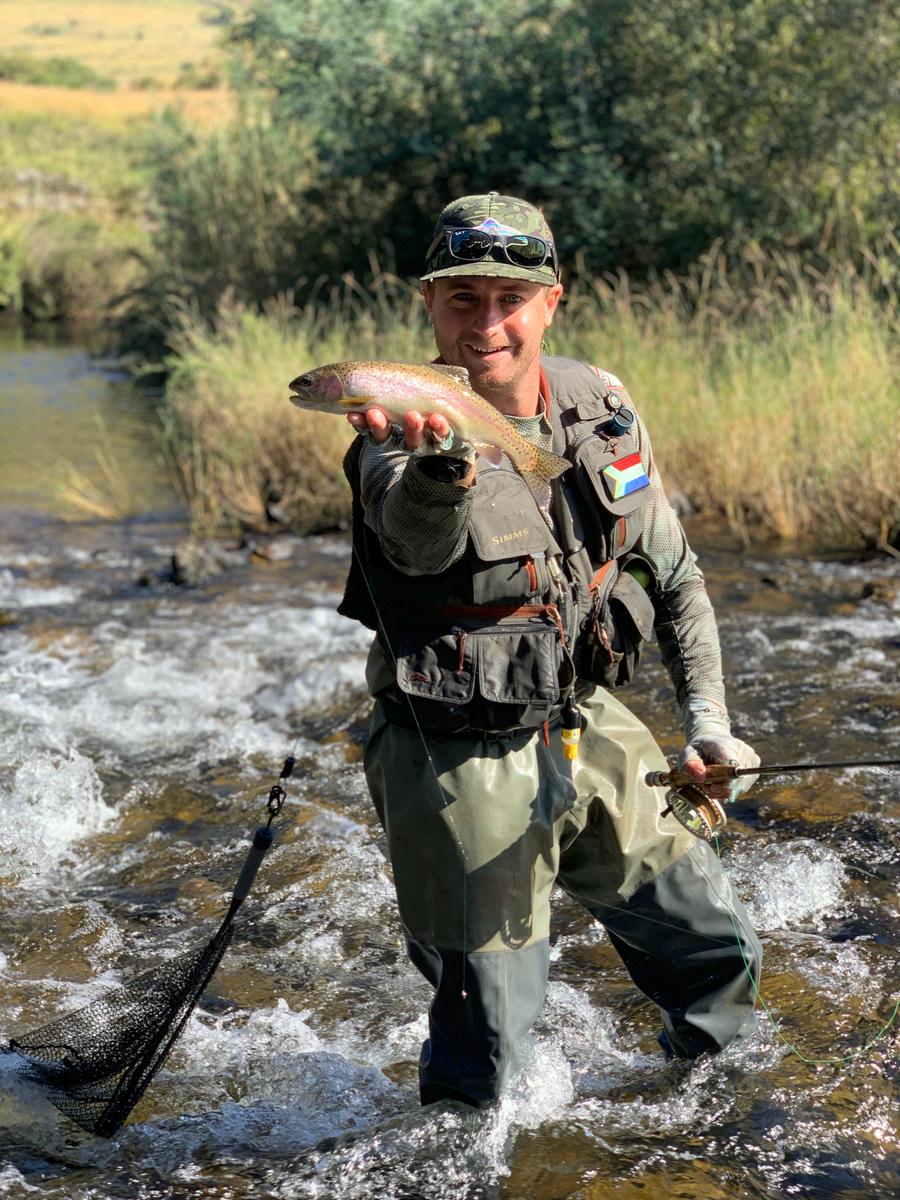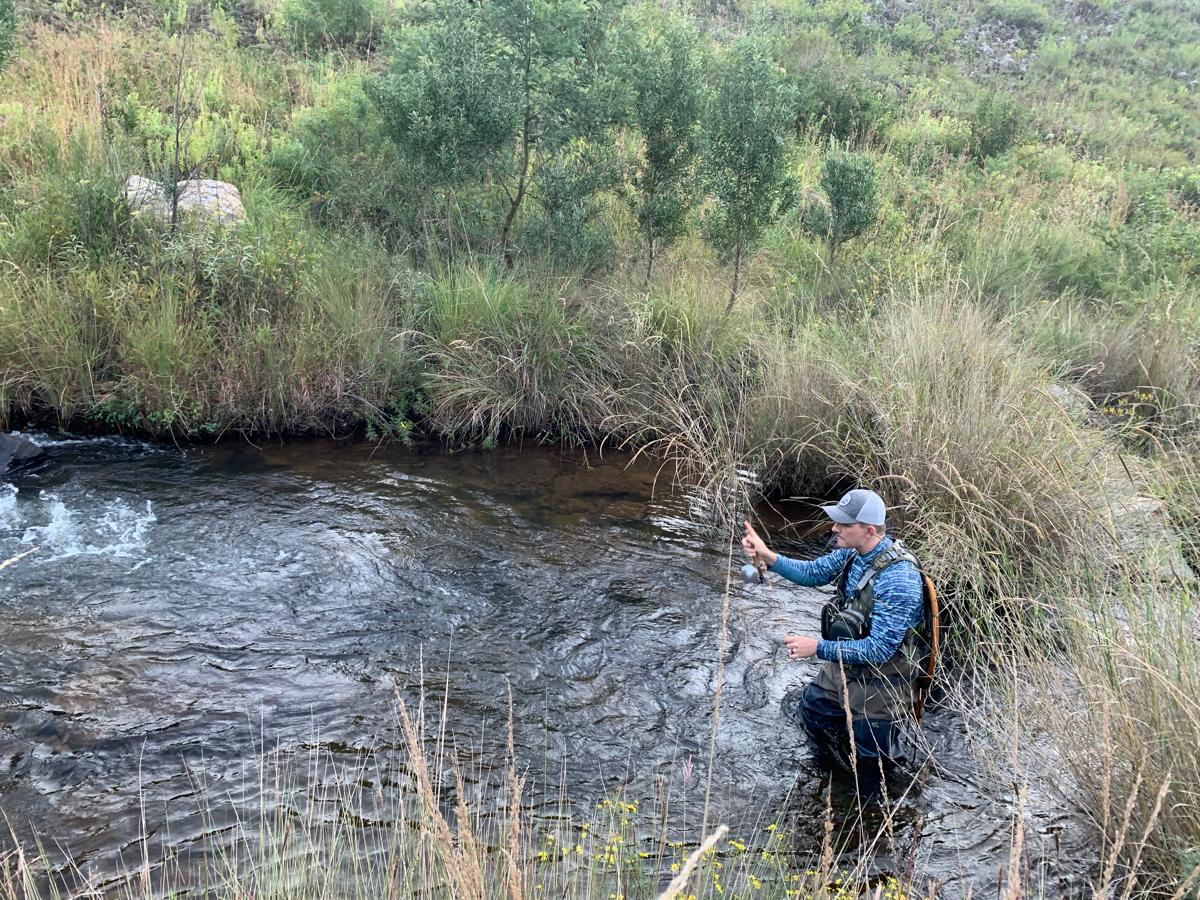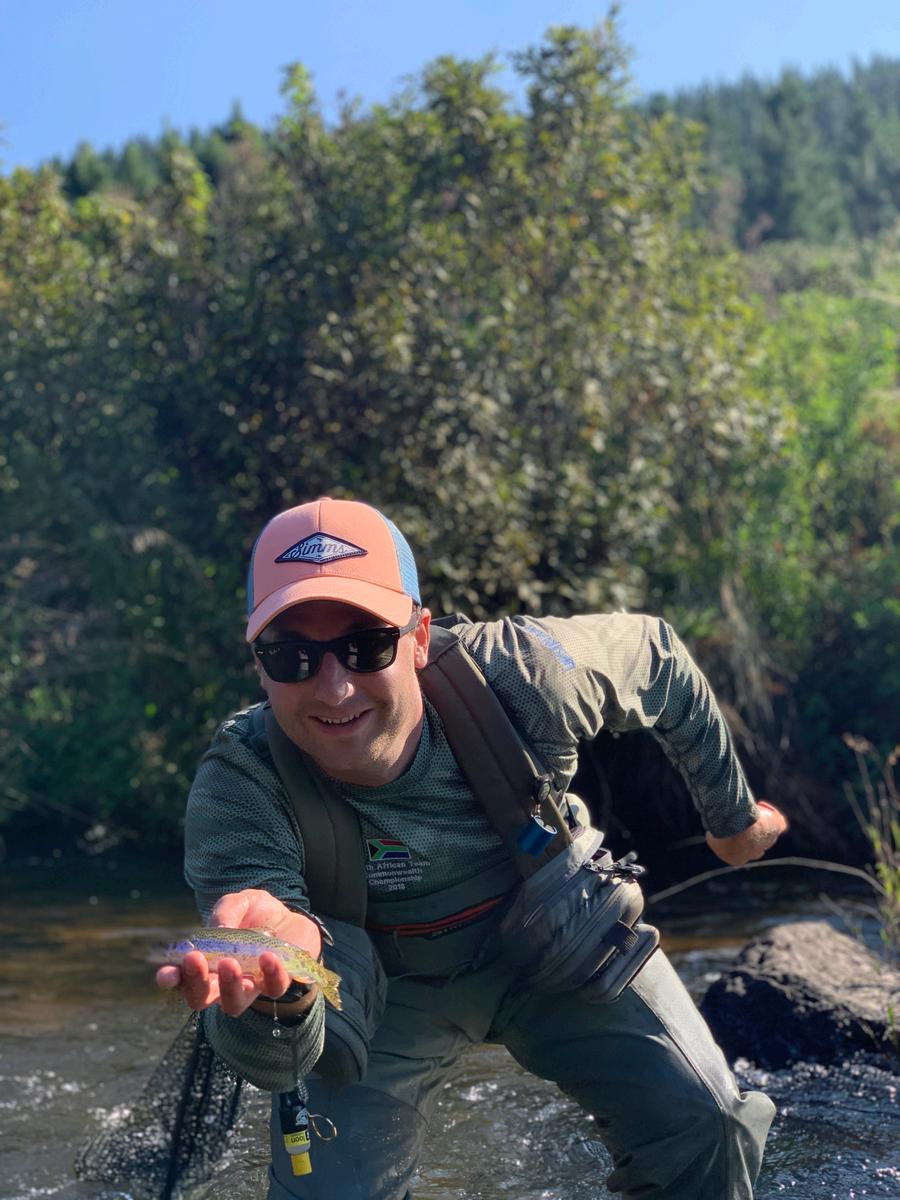
11 minute read
Finding your river technique Part II in a Series of Articles by Brett van Rensburg
With Nationals around the corner my mind has been busy with all the preparation required to compete in five river sessions across three days for difficult trout. A visit to the Pilgrims valley is a special experience and the sheer expanse of different types of water makes this type of fishing environment more than interesting, even for the most confident angler. While helping my team prepare I noticed one of the most asked questions was, “what technique would I fish here?” or “when would I try this?”
These questions really got me thinking (not always a good thing), and that thinking led me to the next step in understanding how to fish a river. For years anglers have got it wrong when choosing the specific technique they wish to fish on a piece of water. The idea is to know how to fish various techniques and even more importantly knowing when to apply the correct technique. No need fishing a dry fly when the fish are feeding on nymphs on the bottom of the riverbed and, on the opposite side of the spectrum, don’t Euronymph when the fish are clearly rising to a hatch.
Advertisement
I believe that flyfishers in general get this wrong because it feels uncomfortable to fish water in a way that they are not used to fishing. People in general tend to stick to what they feel comfortable with, only changing when it becomes completely necessary. Throughout this article we will touch on different techniques and bestpractice ways of fishing them and I hope to providing you with the confidence that you need to give them a try.
Floating a Fly (Dry Fly Fishing)
Let’s use this example - you finally made it out on the river for some fishing. Even more than this, you find yourself in the middle of a hatch. Because you have eyes and you recognise a few insects you understand that you are witnessing a mayfly hatch.
You stand and watch as fish-after-fish rise to these insects and you instinctively decide to put on a similar size fly pattern to the natural and fish on the surface. The problem is, you’ve tried all your flies that imitate that insect and you still can’t get them to eat.
This can be a frustrating reality of flyfishing that even the most experienced anglers have to deal with. Even when matching the hatch correctly you can be left fish-less and frustrated. Here are three simple tips that might help you hook one or two of these difficult fishies.
Size Doesn’t Always Matter
Often when you can’t get the fish to feed on your dry fly they are being spooked by the hook or the fly is just too big. Going one or even two sizes smaller will help the trout to feel more comfortable with your fly. Trout are cautious but they are always more comfortable eating something smaller rather than bigger - so when in doubt think small.
If you struggle to see the smaller fly, just fish a bigger pattern up front and tie the smaller pattern behind it 50-60cm from the bend of the hook. I don’t often fish two dries however this is a good way to cover all your bases, give you sight of your drift and cover more opportunities on the water.
I’ve been on fishing high up on the Cape streams where I literally saw the fish rise to my fly, bump the hook with its nose and then
refuse the presentation. I was fishing 8X tippet and it was a perfect imitation - they just saw the hook. By changing my fly down a few sizes I managed to catch that fish just a few casts later. We all want to fish large flies because it’s easier, they float better etc., however when the situation calls for it and the fish are refusing your fly make the change and tie on a smaller option.
Make the Picasso Cast
This creates a more delicate presentation and and additional 20-30cm of slack in your cast because of the energy transfer created on the lighter tippet. By doing this the fly will land more softly and will give you more slack close to the fly to allow for a more smooth, drag free drift.
If you have matched the hatch, gone smaller and still the fish are not interested we need to look at how you are positioning and landing that bad boy.
You’d be amazed how little your fly has to “skate” or move unnaturally to turn the fish off and to put them down. This doesn’t apply only to that single drift but potentially for hours of fishing. On clearer rivers you want to start short and work to a longer cast, even drifting your line over just one fish is enough to put them all down. In some instances where it is difficult to get to the fish without “lining them” it may be easier to go upstream and drift a fly back onto their holding water - just a trick that may be worth a try;)
The number one mistake of a bad drift is DRAG. In order to create a drag free drift you need to allow enough slack in your line to let the currents move the line without effecting the flies natural movement. This is a lot more difficult than it sounds. At the same time, if you create too much slack in your drift you will be too late to strike on the eat. When fishing slow water behind a rock or the far side of the river over a quick current this can give you that handful of seconds you need to get the eat. You’ll need to be a little quicker than normal on your hook-set to compensate for the slack, but when a fussy fish tests your limits this is a great solution.
Find Your Drift (Euro-Nymph)
Over the past couple of decades European nymphing techniques have been refined by top competition anglers from across the world.
In South Africa we have started to see a real adoption of the technique because of the versatility it enables on the water. We have seen continued evolution of the technique, equipment and rig setup. spooked after a few false casts.
This is where fishing shorter can be to your advantage. If you cannot fish shorter because of the situation you find yourself in make use of an aerial mend to give your fly the chance to drift drag free. A perfect mend should not affect the current drift of your fly at all and should make minimal splash on the water.

And don't ever forget to stay hydrated
Go Long
For someone who hadn’t done a ton of nymphing this style of fishing was fairly easy to pick up and I almost immediately had success. I was catching fish in water that I didn’t realise fish were holding in, or water that I would have passed over. I was catching big fish that I would have previously spooked after a few false casts.
My rule of thumb when it comes to nymphing rigs is that simpler is always better.
My current leader constructions looks something like this:
10 feet (a rod length) of 0.20mm coloured monofilament – green and yellow is my favourite 50 cm of 0.18mm clear monofilament 40cm of 0.16mm bicolour indicator 2mm Tippet ring

appropriate tippet that you are looking to fish. This type of leader is simple to replicate and can be fished over and over again.
From the tippet ring (as a standard) I tie my tippet sections on with a half blood knot. I like a tippet section of one metre to my first fly, and then 50-70cm to my point fly. I would say this is the most versatile setup to fish, however it is very important to adjust it based on the type of water you are fishing.
Thinner water may require a shorter tippet section or the need to hold the indicator higher out of the water. The point is to always ensure that your flies are at the correct depth while still feeling comfortable with your setup.
In deeper runs I like to lower my flies into the water to the point that my indicator is submerged and I use my coloured monofilament as a temporary indicator.

It is important to use droppers for multi-fly rigs rather than tying to the shank of the hook. In competition fishing New Zealand rigs are actually banned. By fishing a dropper you enable the flies to move more freely in the water and this enables more takes. The simplest and best dropper knot is a three turn surgeons knot, using the bottom tag as the dropper. Your dropper length will shorten as you change flies, so I like to start with a 12cm dropper to allow for some fly changes as I go.
Much the same as dry fly fishing “The Drift” is key to improving the number of takes that you get. I have found a high stick makes for a natural drift and a better connection between rod and fly. Now you are probably asking, “what is a high stick?”. What I am referring to is keeping your rod tip as high as possible. This way you are always in contact and your flies act like a pendulum beneath the water. This simple change in technique will allow for longer, more in-contact drifts and most certainly less drag on your flies.
Finally, the “EATS” are awesome – I think this approach has made me a better fisherman because most of the takes I am noticing are tactile rather than visual. Your ability to feel the take and know where the fish are holding will improve drastically through the art of Euro-nymphing. It helps having the two tone tippet as an indicator and for the most part that is what I’m watching with my drifts - but 85% of the time I feel the strike before seeing any hesitation in my line. I feel more connected to my nymphs and more in sync with the drift in real time.
The Dry Before the Drop
Another popular way of fishing a river system is with a simple dry/dropper rig. This inbetween method of fishing can be very effective when the water is very high and the fish have moved up against the banks. For me this method is best used when I am struggling to identify where the fish are feeding as this option covers multiple depths in a column of water in a simple and efficient manor.
Two is Better Than One
This may seem logical, but it’s one that many people simply overlook. Most nymph fishermen almost always fish two flies, but laugh at the idea of fishing a dry fly instead of an indicator. This makes very little sense to me because I have never caught a fish on a strike indicator!
Usually in the late summer months trout become extremely opportunistic and will readily eat both nymphs and surface flies, often at the same time of the day. A fish that might not eat your double nymph rig may be more than willing to come eat a mayfly or hopper pattern.
Another thing to keep in mind, and one that I’ve been doing a lot this year, is fishing two nymphs below a big dry fly. It’s really not that terrible to cast, and ends up giving you the same opportunity on the nymphs as you would have had just nymphing them. I would typically use this technique in deeper, more laminar runs.
The biggest pain with an indicator rig in most circumstances is that they’re not the most elegant casting setups. They tend to make a big splash and don’t easily turn over in a tight spot.
A dry-dropper setup casts much cleaner, you can fish it in a lot tighter spots and cast it much more accurately than a similar nymph rig. Because you can sneak casts into more places and be fighting fewer tangles you end up fishing more in places that you wouldn’t typically fish.
What Bite?
What I do like about a dry-dropper rig is the ease in seeing the strike. Strike indicators can be large and too buoyant in the water. Smaller takes are easily missed because of the lack of movement on the indicator.
I have found over the last few years that a small dry fly with the right amount of floatant can still hold up a fairly large nymph and, more importantly, takes are more easily noticed when fishing a smaller dry fly. A dry fly is much less buoyant and when it goes down it has less of a tendency to want to come back up to the surface. Also, dry flies sit much higher on the surface of the water so it’s easier to see when they submerge.

Seeing your bites sooner equates to catching more fish! For me it’s as simple as that!











